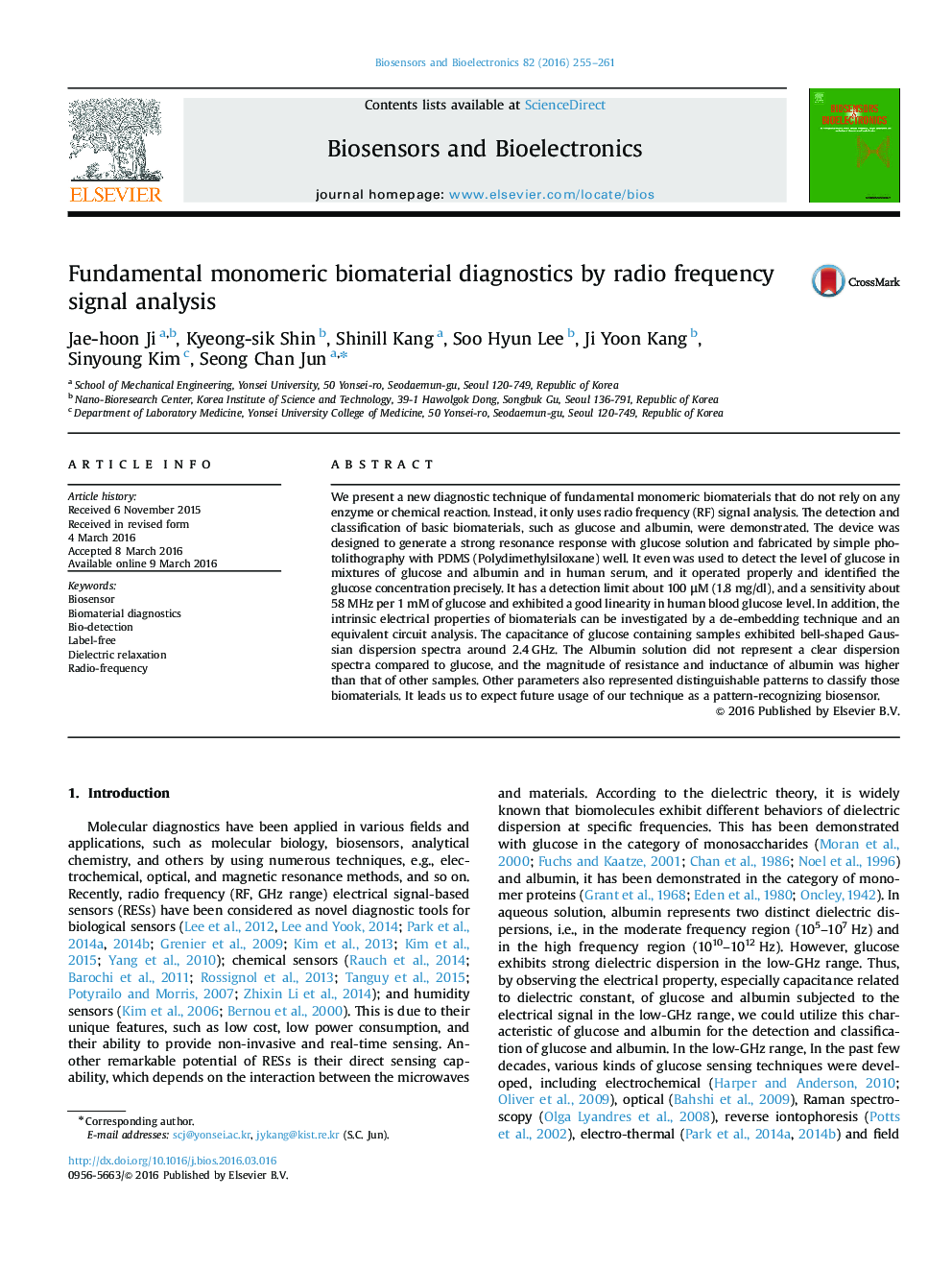| کد مقاله | کد نشریه | سال انتشار | مقاله انگلیسی | نسخه تمام متن |
|---|---|---|---|---|
| 866284 | 1470949 | 2016 | 7 صفحه PDF | دانلود رایگان |
• Monomeric biomaterials are detected by solely analyzing the radio-frequency electrical signal on the solutions..
• The sensor was designed to exhibit a strong resonance for glucose solution.
• The unique dielectric property of biomaterial was observed in RF range.
• An equivalent circuit was established to investigate the electrical properties of the biomaterial.
• The sensor also operated well under the mixture condition, even in human serum.
We present a new diagnostic technique of fundamental monomeric biomaterials that do not rely on any enzyme or chemical reaction. Instead, it only uses radio frequency (RF) signal analysis. The detection and classification of basic biomaterials, such as glucose and albumin, were demonstrated. The device was designed to generate a strong resonance response with glucose solution and fabricated by simple photolithography with PDMS (Polydimethylsiloxane) well. It even was used to detect the level of glucose in mixtures of glucose and albumin and in human serum, and it operated properly and identified the glucose concentration precisely. It has a detection limit about 100 μM (1.8 mg/dl), and a sensitivity about 58 MHz per 1 mM of glucose and exhibited a good linearity in human blood glucose level. In addition, the intrinsic electrical properties of biomaterials can be investigated by a de-embedding technique and an equivalent circuit analysis. The capacitance of glucose containing samples exhibited bell-shaped Gaussian dispersion spectra around 2.4 GHz. The Albumin solution did not represent a clear dispersion spectra compared to glucose, and the magnitude of resistance and inductance of albumin was higher than that of other samples. Other parameters also represented distinguishable patterns to classify those biomaterials. It leads us to expect future usage of our technique as a pattern-recognizing biosensor.
Figure optionsDownload as PowerPoint slide
Journal: Biosensors and Bioelectronics - Volume 82, 15 August 2016, Pages 255–261
